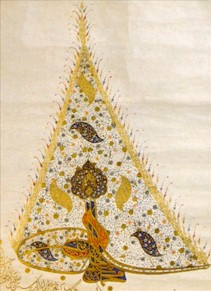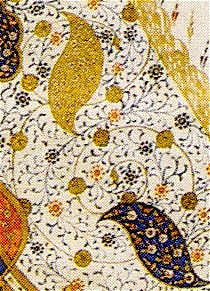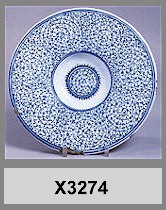 |
 |
| B.4. | ‘Golden Horn ware’: | |||
The term ‘Golden Horn’ is used to describe those vessels which are decorated with blue and white spirals with comma leaves. The appellation comes from the fact that many fragmentary examples and sherds of this type were dug up at Sirkeci on the south shore of the Golden Horn, at the beginning of the twentieth-century. Like the term ‘Rhodian’ to describe that Iznik pottery which features underglaze red decoration, since many such examples are known from the island of Rhodes, this is a misnomer which is difficult to dislodge.
This distinctive spiral decoration derives straight from manuscript illumination, and especially from the decorated background of Ottoman imperial tughras, such as appear on official documents, or firmans.
 |
 |
An excellent example of ‘Golden Horn’ ware is the Godman surahi (flask) in the British Museum, an elegant object whose shape may derive from a Venetian glass protoype. The Italian connection is also seen in the fact that several examples of a tondino form - a dish with a small, deep bowl and wide flaring rim, which is a well-known shape from the Italian maiolica industry - are decorated in this spiral style, such as Ashmolean bowl X3274 (pictured below). Leafy spirals also turn up in attenuated form on some maiolica pieces, such as on two albarellos (drug jars). Other vessels with spiral decoration include dishes, tankards, tiles, and great basins on pedestal feet; some have olive-green outlines or touches of turquoise, which precedes the next (polychrome) phase of Iznik.
 |